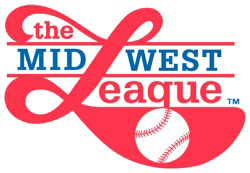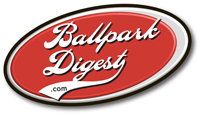 Today’s Midwest League has its root in several Class C and D leagues spread across Wisconsin, Iowa, and Illinois, including the Three-I League, the Illinois State League, the Wisconsin State League, and the Mississippi-Ohio Valley League.
Today’s Midwest League has its root in several Class C and D leagues spread across Wisconsin, Iowa, and Illinois, including the Three-I League, the Illinois State League, the Wisconsin State League, and the Mississippi-Ohio Valley League.
The direct predecessor to the Midwest League is the Illinois State League, a six-team Class D league that began play in 1947. We are not taking major markets hosting teams in this league — indeed, the Illinois State League was filled with the likes of the Belleville Stags and the West Frankfort Cardinals. When the league expanded outside of Illinois in 1949 to Paducah (Kentucky), the league was renamed the Mississippi-Ohio Valley League. After a further expansion to Iowa in 1956, the league became the Midwest League.
Many of the teams in the Midwest League were also part of other leagues throughout the years. For instance, Appleton, Wisconsin Rapids, and Wausau were consistent members of the Class D Wisconsin State League, which existed from 1905-1907 and 1940-1953. The Central League, which had runs in 1903-1934 and 1948-1951, featured teams in Fort Wayne, Grand Rapids, Peoria, and Dayton. The Central Association, existing in 1908-1917 and then again in 1947-1949, featured teams in Keokuk, Rockford, Dubuque, Waterloo, and Clinton. Cedar Rapids had a run in the Western League and won a championship in 1937.
During this era the league was unstable, to say the least, with teams floating in and out of the league. However, when the Three-I League disbanded in 1962, its three strongest franchises (Appleton, Cedar Rapids, and Burlington) joined the Midwest League. When the lower classes were eliminated in 1963, the league was promoted to a Class A league.
The roots of today’s Midwest League can be traced to 1982, when the league expanded into Beloit and Madison. The Beloit franchise was traditional and community-owned, but the Madison Muskies proved to be an instant hint not because of its onfield product but because of the relentless promotion from team owners. While the Madison owners could not keep up that level of promotion over the years — Madison would eventually lose the Muskies as well as a successor franchise, the Top Hatters — the future of the league was clear, as new owners would stress the entertainment value of the ballpark experience and their own identity independent of the parent team.
Team owners would also need to conform to new rules laid down by major-league baseball and ratified by the National Association. The Professional Baseball Agreement laid down minimum standards for minor-league ballparks, and communities with substandard facilities were forced to either upgrade their ballparks or lose their franchises.
Smaller communities, such as Wisconsin Rapids, Wausau and Kenosha, would lose their franchises to larger cities in Illinois and Indiana, where city officials were all too willing to put millions of dollars into new ballparks. For instance, the Kane County Cougars were an instant success in a new ballpark in 1990, attracting almost 250,000 fans, while the Fort Wayne Wizards drew 318,000 fans in 1992 in a new ballpark. New teams continually raised the stakes: the West Michigan Whitecaps drew 475,212 fans in 1994, while the Lansing Lugnuts drew 538,325 fans in 1996 in the $12.7 million Oldsmobile Park, and the Dayton Dragons attracted 581,853 fans in 2000 in its new ballpark.
The move into larger markets paid off handsomely for team owners, as the league drew 3.2 million fans in 2000. While the more nostalgic of us might miss Class A ball being played in small markets like Wisconsin Rapids and Kenosha, the fact that the Midwest League is now on solid footing shows that there is a baseline where professional baseball can exist on a profitable and ongoing basis.
The last major shift in the league came in 2010, when the Bowling Green Hot Rods and Lake County Captains shifted from the South Atlantic (Sally) League to the Midwest League.
Class D / 1947-1962
Class A / 1963-present
Current Teams (in alphabetical order)
Beloit Snappers
Bowling Green Hot Rods
Burlington Bees
Cedar Rapids Kernels
Clinton LumberKings
Dayton Dragons
Great Lakes Loons
Fort Wayne Tincaps
Kane County Cougars
Lake County Captains
Lansing Lugnuts
Peoria Chiefs
Quad Cities River Bandits
South Bend Silver Hawks
West Michigan Whitecaps
Wisconsin Timber Rattlers
Teams (in alphabetical order)
Appleton Foxes, 1962, 1967-1994
Battle Creek Yankees, 2003-2004
Belleville Stags, 1947-1949
Beloit Brewers, 1982-1994
Beloit Snappers, 1995-present
Bowling Green Hot Rods, 2010-present
Burlington Astros, 1991-1992
Burlington Bees, 1962-1981, 1993-present
Burlington Braves, 1988-1990
Burlington Expos, 1986-1987
Burlington Rangers, 1982-1985
Canton Citizens, 1952
Cedar Rapids Astros, 1973-1974
Cedar Rapids Cardinals, 1965-1972
Cedar Rapids Giants, 1975-1979
Cedar Rapids Kernels, 1993-present
Cedar Rapids Red Raiders, 1962-1964
Cedar Rapids Reds, 1980-1992
Centralia Cubs, 1947-1949
Centralia Sterlings, 1950
Centralia Zeros, 1951-1952
Clinton Dodgers, 1977-1979
Clinton Giants, 1980-1993
Clinton LumberKings, 1994-present
Clinton Pilots, 1966-1976
Clinton Pirates, 1954-1959
Clinton C-Sox, 1960-1965
Danville Dans, 1951-1954
Danville Dodgers, 1975-1976
Danville Suns, 1982
Danville Warriors, 1970-1974
Davenport Braves, 1960
Dayton Dragons, 2000-present
Decatur Commodores, 1952-1974
Dubuque Packers, 1954-1967, 1974-1976
Dubuque Royals, 1968
Midwest Dodgers, 1962 (played in Dubuque)
Fort Wayne Tincaps, 2009-present
Fort Wayne Wizards, 1993-2008
Fox Cities Foxes, 1963-1966
Great Lakes Loons, 2007-present
Hannibal Cardinals, 1953-1954
Hannibal Citizens, 1955
Hannibal Stags, 1952
Kane County Cougars, 1991-present
Kenosha Twins, 1984-1992
Keokuk Cardinals, 1958-1961
Keokuk Dodgers, 1962
Kokomo Dodgers, 1956-1961
Kokomo Giants, 1955
Lake County Captains, 2010-present
Lafayette Chiefs, 1955
Lafayette Red Sox, 1956-1957
Lansing Lugnuts, 1996-present
Madison Hatters, 1994
Madison Muskies, 1982-1993
Marion Indians, 1947-1948
Mattoon Athletics, 1957
Mattoon Indians, 1947-1952
Mattoon Phillies, 1953-1956
Michigan Battle Cats, 1995-2002
Michigan City White Caps, 1956-1959
Midwest Dodgers, 1962 (played in Dubuque)
Mount Vernon Braves, 1947-1948
Mount Vernon Kings, 1949-1954
Paducah Chiefs, 1949-1950
Paris Lakers, 1950-1959
Peoria Chiefs, 1984-present
Peoria Suns, 1983
Quad Cities Angels, 1962-1978, 1986-1991
Quad Cities Braves, 1961
Quad Cities Cubs, 1979-1985
Quad Cities River Bandits, 2008-present
Quad City River Bandits, 1992-2002
Quincy Cubs, 1965-1973
Quincy Giants, 1960-1961
Quincy Gems, 1964
Quincy Jets, 1962-1963
Rockford Cubbies, 1995-1998
Rockford Expos, 1988-1992
Rockford Reds, 1999
Rockford Royals, 1993-1994
South Bend Silver Hawks, 1994-present
South Bend White Sox, 1988-1993
Southwest Michigan Devil Rays, 2005-2006
Springfield Cardinals, 1982-1993
Springfield Giants, 1950
Springfield Sultans, 1994-1995
Swing of the Quad Cities, 2005-2007
Vincennes Citizens, 1950
Vincennes Velvets, 1951-1952
Wausau Mets, 1975-1978
Wausau Timbers, 1979-1990
Waterloo Diamonds, 1989-1993
Waterloo Hawks, 1958-1969
Waterloo Indians, 1977-1988
Waterloo Royals, 1970-1976
West Frankfort Cardinals, 1947-1950
West Michigan Whitecaps, 1994-present
Wisconsin Timber Rattlers, 1995-present
Wisconsin Rapids Senators, 1963
Wisconsin Rapids Twins, 1964-1983
Click here for all Ballpark Digest stories on the Midwest League
—-
Share your news with the baseball community. Send it to us at editors@augustpublications.com.
Subscribers to the weekly Ballpark Digest newsletter see features before they’re posted to the site. You can sign up for a free subscription at the Newsletter Signup Page.
Join Ballpark Digest on Facebook and on Twitter!
